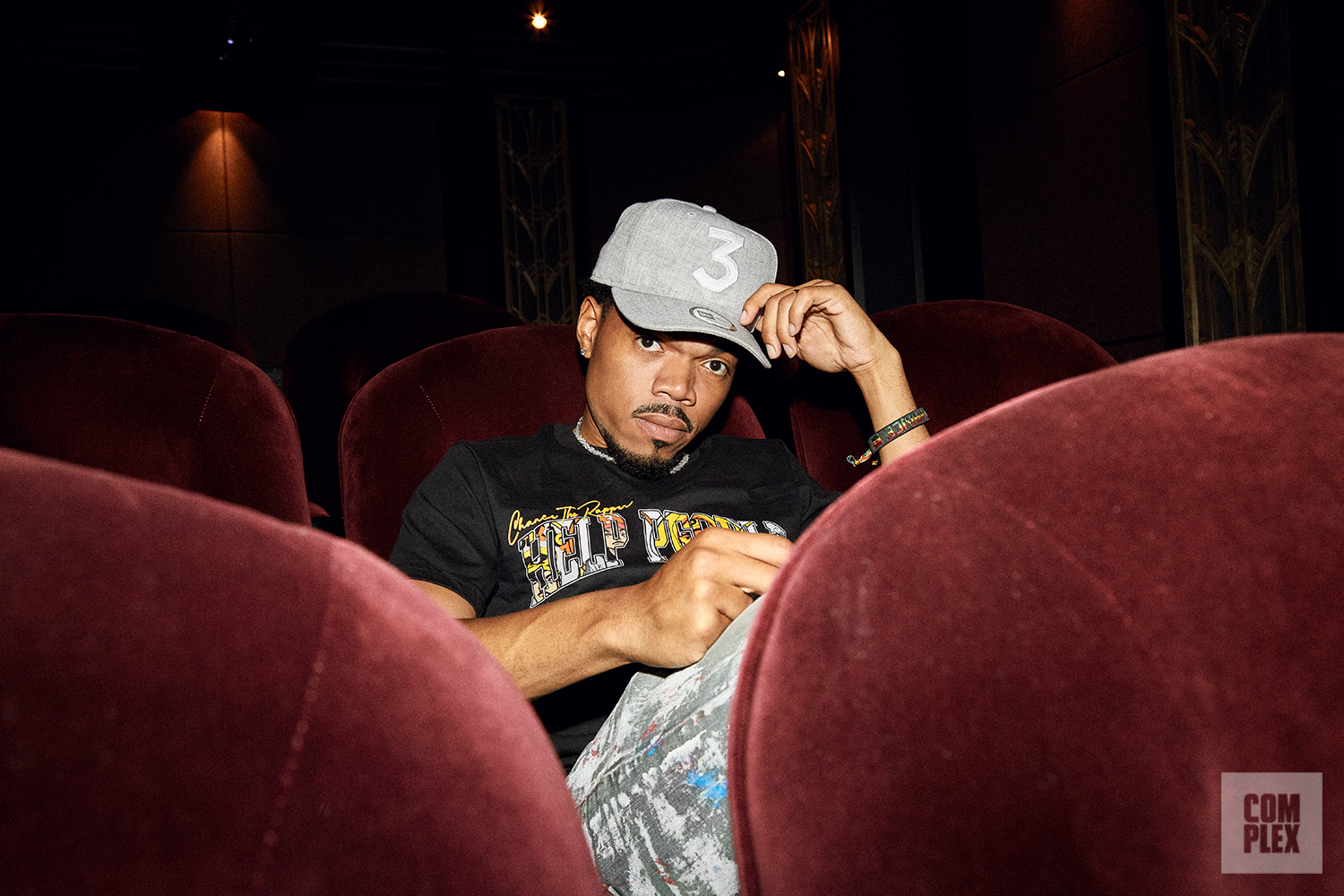
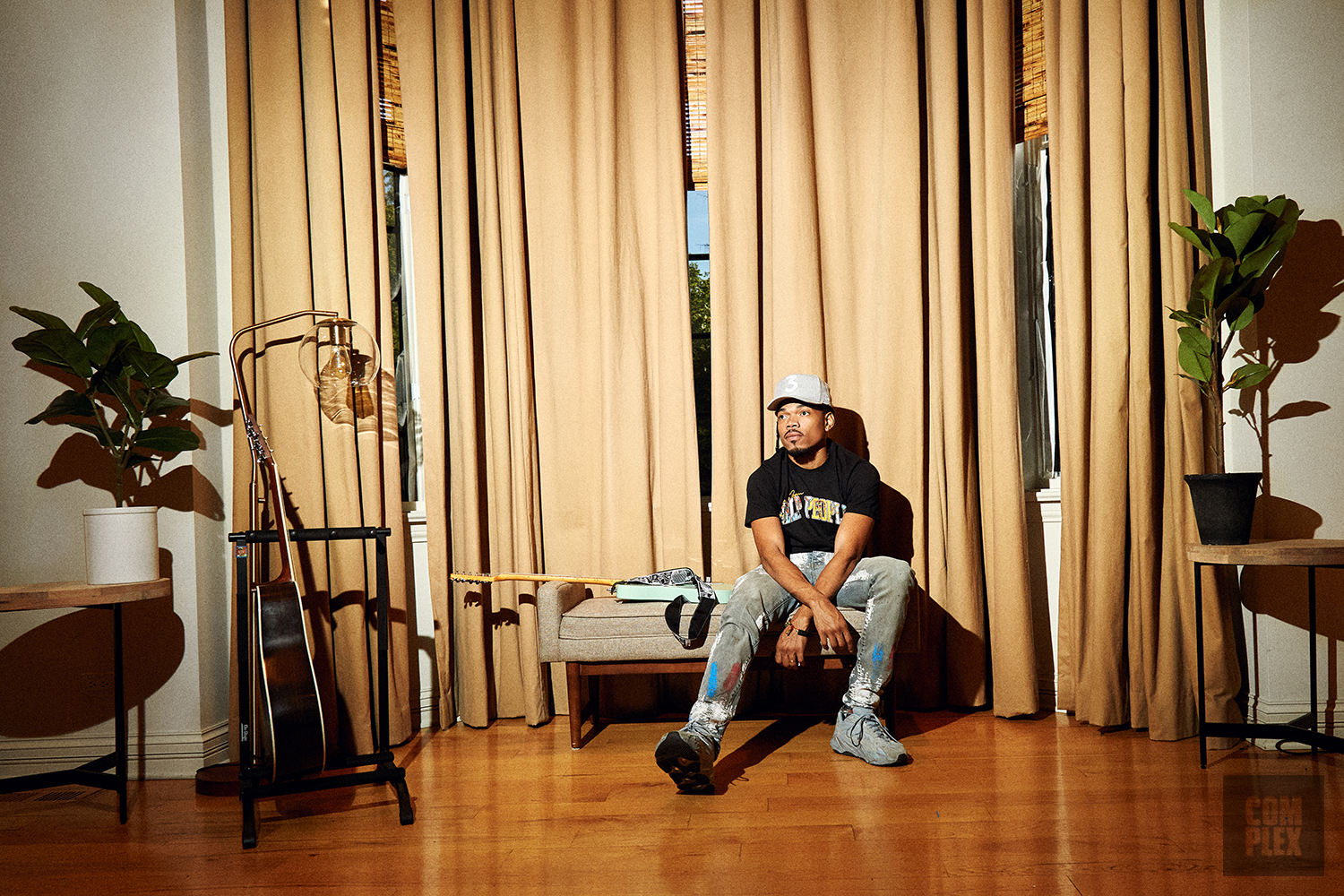
“I just needed a studio space that was closer to home, and around 2020, I was focusing a lot on learning my craft in terms of video and visual stuff, so I was watching a lot of video essays and learning about how to set up the aesthetic that I wanted,” Chance explains of the space as we walk downstairs toward the at-home theater that sometimes doubles as a studio. “So I wanted…something that could work as a music studio, film studio, art studio, to take meetings, to rehearse. I wanted an all-purpose space.”
House of Kicks has become Chance the Rapper’s new sanctuary, and over the last two years, he’s made sure to make the crib feel as inviting as possible. Outside of being a creative one-stop shop, House of Kicks also looks and smells like an old-fashioned Black Southern residence—one that your grandmother has kept in the family for generations and every cousin has spent at least one summer in—despite it being newly bought. It’s a home filled with dusty VCR tapes, large boxy televisions, and rich childhood memories. Christmas lights are wrapped on stair railings, and gaming systems—new and old—clutter the basement. Large Bennett family portraits are hung up, one of which was with former president Barack Obama. They all adorn the living room, which they call “live room,” walls, as if Chance and kin had grown up there.
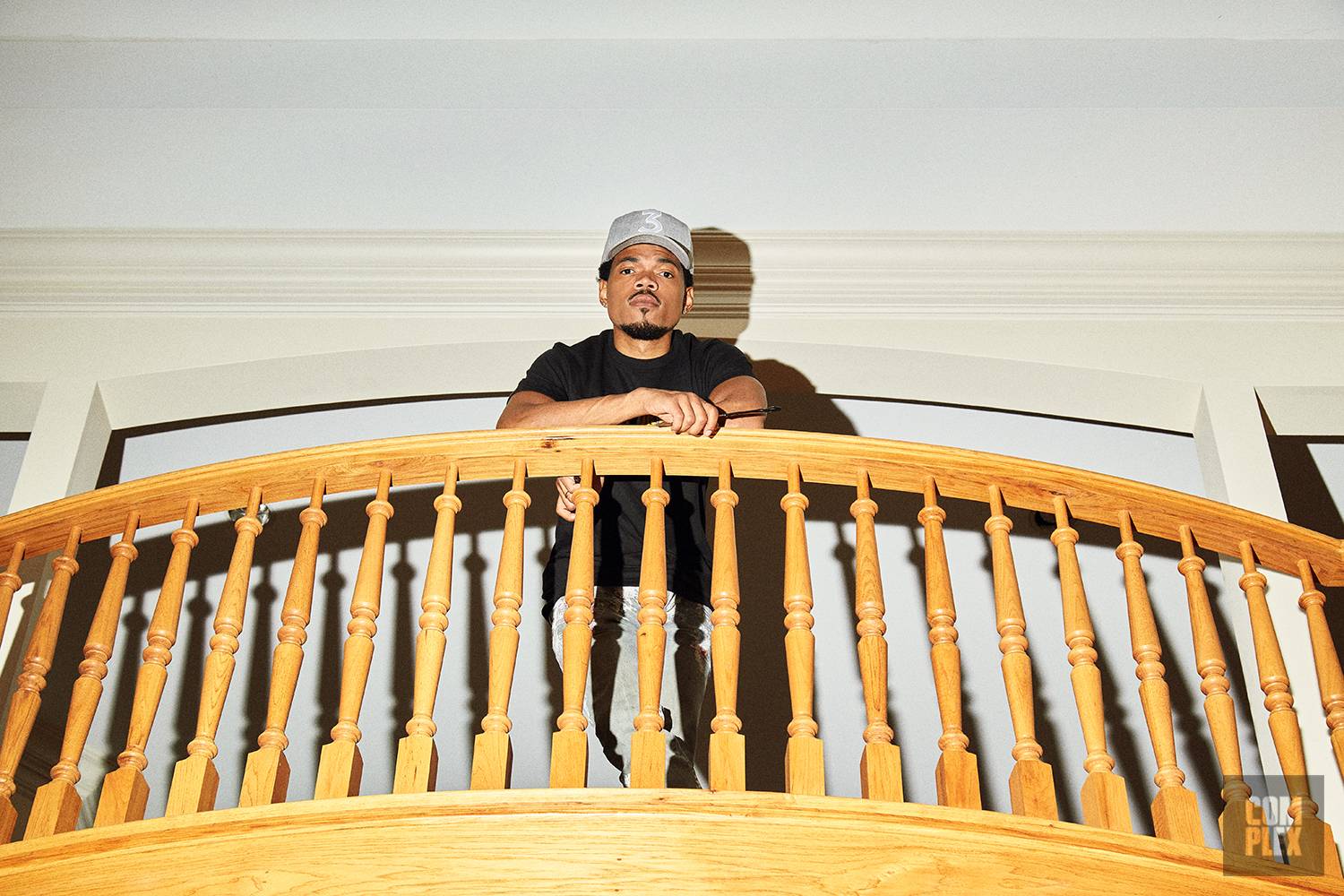
Large vision boards filled with details from Chance’s new 16-track album—potential song titles, artwork, ad-libs, and other hidden details that will slowly be revealed as the album continues to take shape over these next few months—fill the live room.
As I wait for Chance to get clothes together for his photo shoot later that day, I’m greeted by his brother and fellow rapper Taylor Bennett and their father Kenny Bennett. Just as Taylor and I begin playing a game of chess, his older brother returns to get his pre–photo shoot haircut in and sit for the interview. Taylor and Kenny stick around for a bit to hear some of our conversation—a not-too-surprising detail, because as Chance’s music reflects, his family has always been at the center of his journey.
“I’m learning more and more that my legacy is many people.”
Chance the Rapper climbed to global music stardom by just being himself: the kid from Chicago. The one who made waves in the underground scene after making a mixtape during his 10-day suspension in high school, shifted the landscape of SoundCloud rap with a mixtape forged in acid and psychedelics, and won a Grammy off a mixtape about loving God. All while being independent. Along the way, he met Kanye West, got married, started a family, picked up cinematography, and gained a loyal fanbase thanks to his commitment to his community and willingness to be vulnerable in his music.
The bedrock of Chance’s discography has been about sharing parts of himself in his music, but that would eventually come at a cost. His 2019 debut studio album, The Big Day, was met with harsh criticism after the artist spent most of the album celebrating falling in love and getting married. The fans who had grown with him since his high-pitched ad-libs on 10 Day and sputtering bars of Acid Rap received the shift in subject matter with confusion. Suddenly, Chance’s public perception changed from hip-hop’s independent golden child to the butt of every corny marital meme. He received similar pushback for making his rhymes more Christian-focused as well, despite Coloring Book being much more well received than The Big Day.
As Chance told us in March, the negativity he receives isn’t lost to him, and he still feels affected by it sometimes. But now he sees things with a different perspective.
The words of Dave Chappelle, a comedian who is also no stranger to criticism, ring in his head to this day. “[Dave] said it to me best. He said, ‘These projects or whatever we do as artists are just like yearbook photos,’” Chance recalls in between the whizzing sounds of the hair clippers. “‘They don’t tell the complete story of who you are, but they show who you are at that moment. You’ll like it or you won’t like it, but next year, you’ll come back and take another one anyway.’”
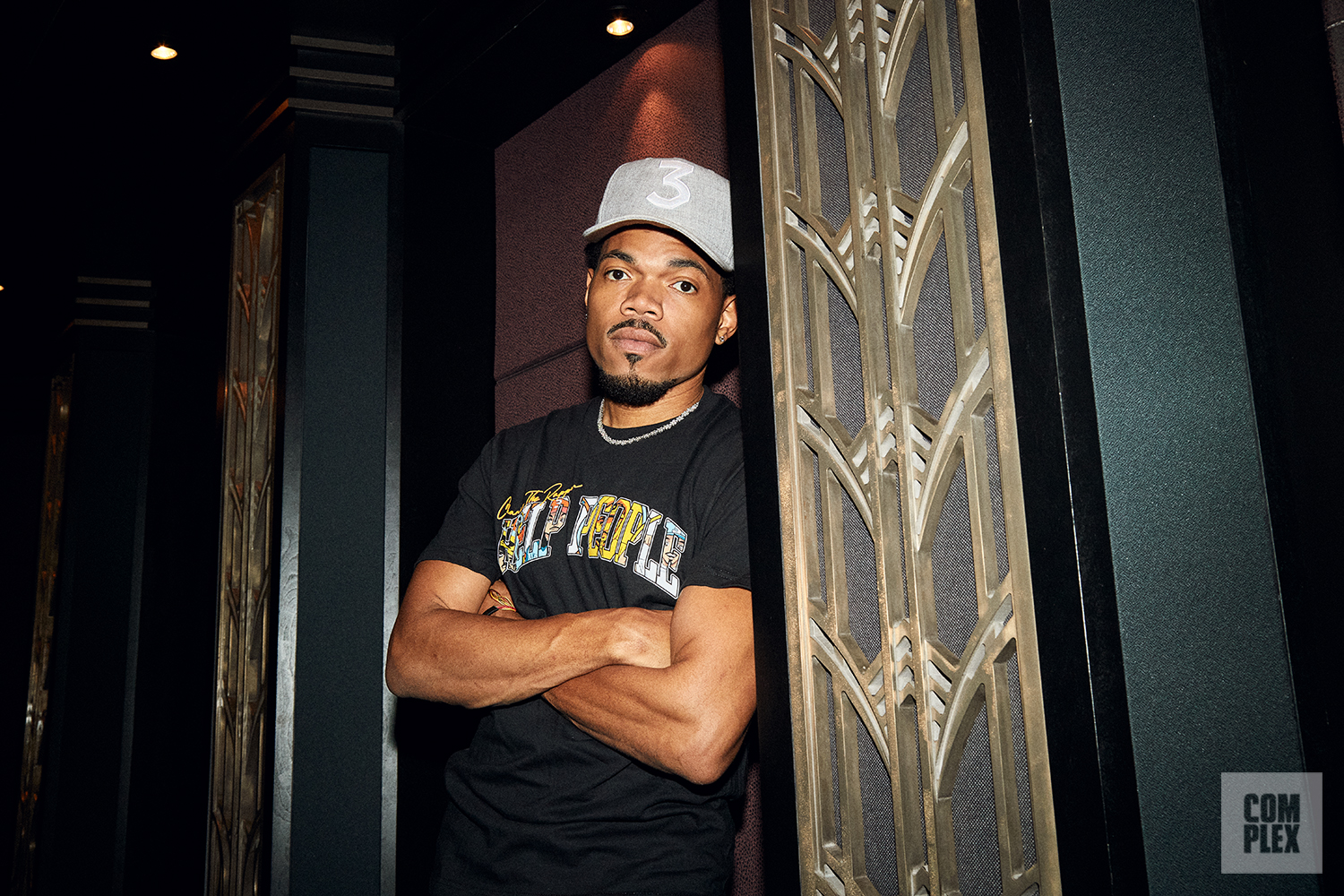
Chance’s public perception isn’t his main focus anymore. He is now fully invested in the artistic concept he is developing with Star Line Gallery. The album—which includes previously released singles “Child of God,” “A Bar About a Bar,” and “The Highs & The Lows.” The album’s title is inspired by the Black Star Line, a shipping line created by a leader of the Pan-African movement, Marcus Garvey. The Black Star Line was meant to transport goods and, eventually, African Americans between the United States, Africa, and the islands of Panama, Jamaica, Cuba, Costa Rica, and other countries represented in the Black diaspora to create a global network. Several members of Chance’s immediate family were Garveyists in the past, and he hopes to carry on their legacy by infusing the corporation’s ethos into that of Star Line Gallery’s as he continues Garvey’s legacy of building bridges in the African diaspora.
Despite what the name of the album might suggest, Chance is not a fan of art galleries. He believes that they operate under similarly exploitative systems such as the music industry and treat visual artists like workers rather than owners of their work.
“The ‘Gallery’ is the Star Line, and the Star Line is all of us,” he explains of the title. “It’s going to be all Black artists from everywhere around the world with all different experiences, but a connection, and in conversation with me and my collaborators to create new pieces that show what it means to be Black right now. It’s not all drenched in the conversation of trauma or about the most familiar aesthetic of Black that we know right now. It’s about what is real.”
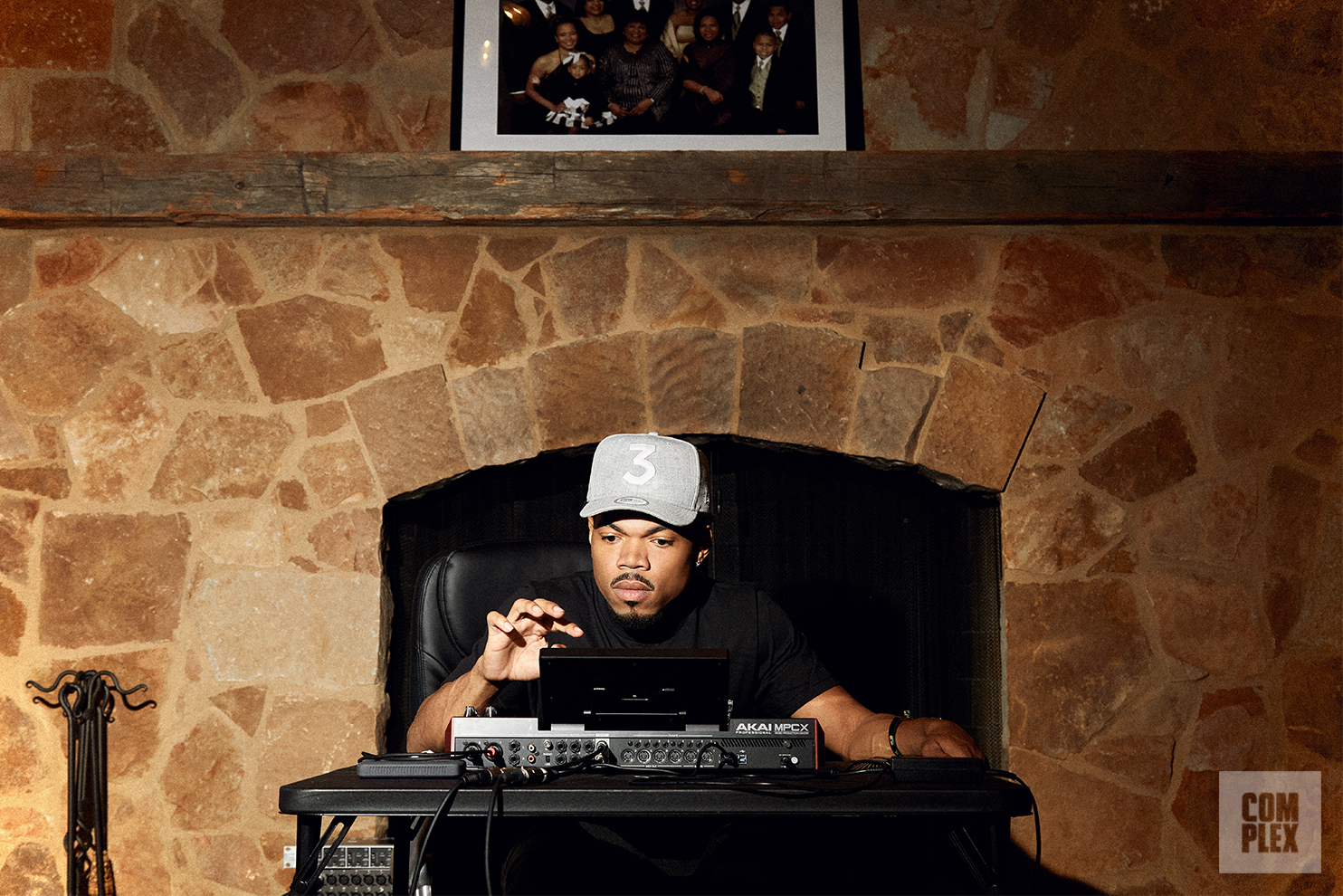
Similar to the three singles that have already been released, each track on the project will have its own unique cover art piece created by a Black artist. They will also maintain full ownership of their work so they can decide what they want to do with it once it gains visibility from the collaboration. One of the first artists Chance worked with was Naïla Opiangah, a talented Gabonese artist who created the artwork for “Child of God.” The painting was revealed at Chicago’s Museum of Contemporary Art earlier this year, and as Opiangah explained the day of the opening, the experience was different for her but exciting.
“It’s been very strange and very great,” she explained. “I don’t have a background in entertainment, and I’m not used to showcasing work or being in a setting like that where I’m the center of attention at this scale, so it was very mind-blowing.”
“This is me developing myself and developing my people,” Chance adds. “It can’t just be me getting different, random cover arts from random people. It has to be, in a series of conversations, getting to know the other person, understanding them, and getting them to understand the music and project that I’m making. And it’s fraud if I don’t maintain connection and collaboration with those people.”
Chance also said that as it stands, Star Line Gallery will not have a proper album cover art so that each independent piece can live on its own. While Chance didn’t sound exactly sure of how the lack of traditional album cover art would look logistically on streaming platforms, he didn’t seem concerned by the idea.
“The Star Line is all of us… It’s not all drenched in the conversation of trauma or about the most familiar aesthetic of Black that we know right now. It’s about what is real.”
Star Line Gallery is ultimately meant to act as a gateway for people to discover new Black art, in as many forms as possible. The connectivity of Star Line Gallery extends beyond just the album as well. On Jan. 6, Chance will be hosting his first annual Black Star Line Festival in Accra, Ghana. The idea was birthed after he learned about how pivotal Ghana was in the Black liberation movement when he first visited the country in 2022.
It will feature Ghanian artists like Sarkodie, King Promise, and more, as well as U.S. acts that have yet to be revealed. Chance hopes that eventually, the Black Star Line Festival will become a celebration of many cultures in several countries. “It’s in Ghana right now, but I look to create more opportunities for artists of the diaspora to perform on the continent, and I also look to create opportunities for Black people to just have mass gatherings in other Black countries and communities,” he adds.
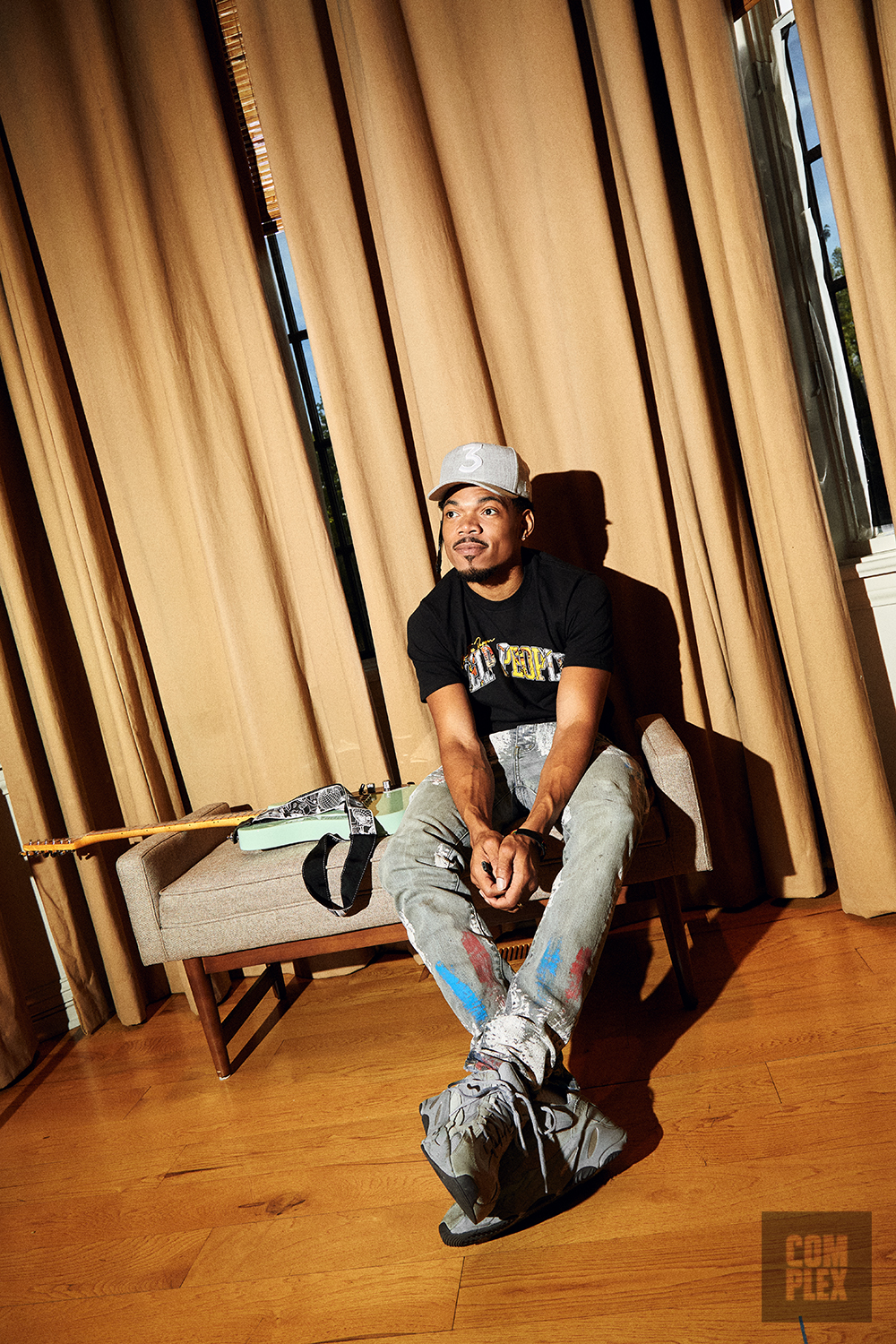

Independence and creating opportunities for others are as deeply intertwined with Chance’s legacy as his music is. The Chicago artist has championed ownership in the music industry, and he doesn’t see that changing anytime soon. “I always wanted to be the first, but I never wanted to be the last,” Chance says when describing how he sees his legacy of unwavering independence in the industry. “That’s the reason why I still never signed anybody. I’ve had a lot of opportunities to sign people; people have asked me if I’d start a label just to sign them. I want artists under my wing but in a way that’s not so transactional.”
He continues, “I’ve helped a lot of people, and what I enjoy is when those people remain independent and remain in contact and community with me. I think what I want to do is continue to empower people. I don’t want to make anybody subject to my views of how their career should go. I don’t need to be in anybody else’s pockets. Everybody who is a creative or as Kanye [West] would call [them], a ‘founder,’ should have the keys and be the only people who have the power to press the button.”
“I always wanted to be the first, but I never wanted to be the last.”
Chance never wants to lose his ability to “press the button”—aka handle his music however he sees fit—so when I ask if he thinks he’ll ever sign to a major label, his answer is resolute: “I would be letting a lot of people down, because I’m what people point to when things succeed, and I’m what people point to when they want to say something failed.”
Chance the Rapper is the personification of Black ownership in the music industry, and he values that role more than any monetary gain. “It’s not common for a Black man to have created what I created and [have] done it so openly,” he says so calmly and quietly that I have to lean in to hear him. “If I were to sign to a label, the next thing you would see is people saying, ‘See, we told you this independent shit wouldn’t work.’ I don’t even have the option to do that.”
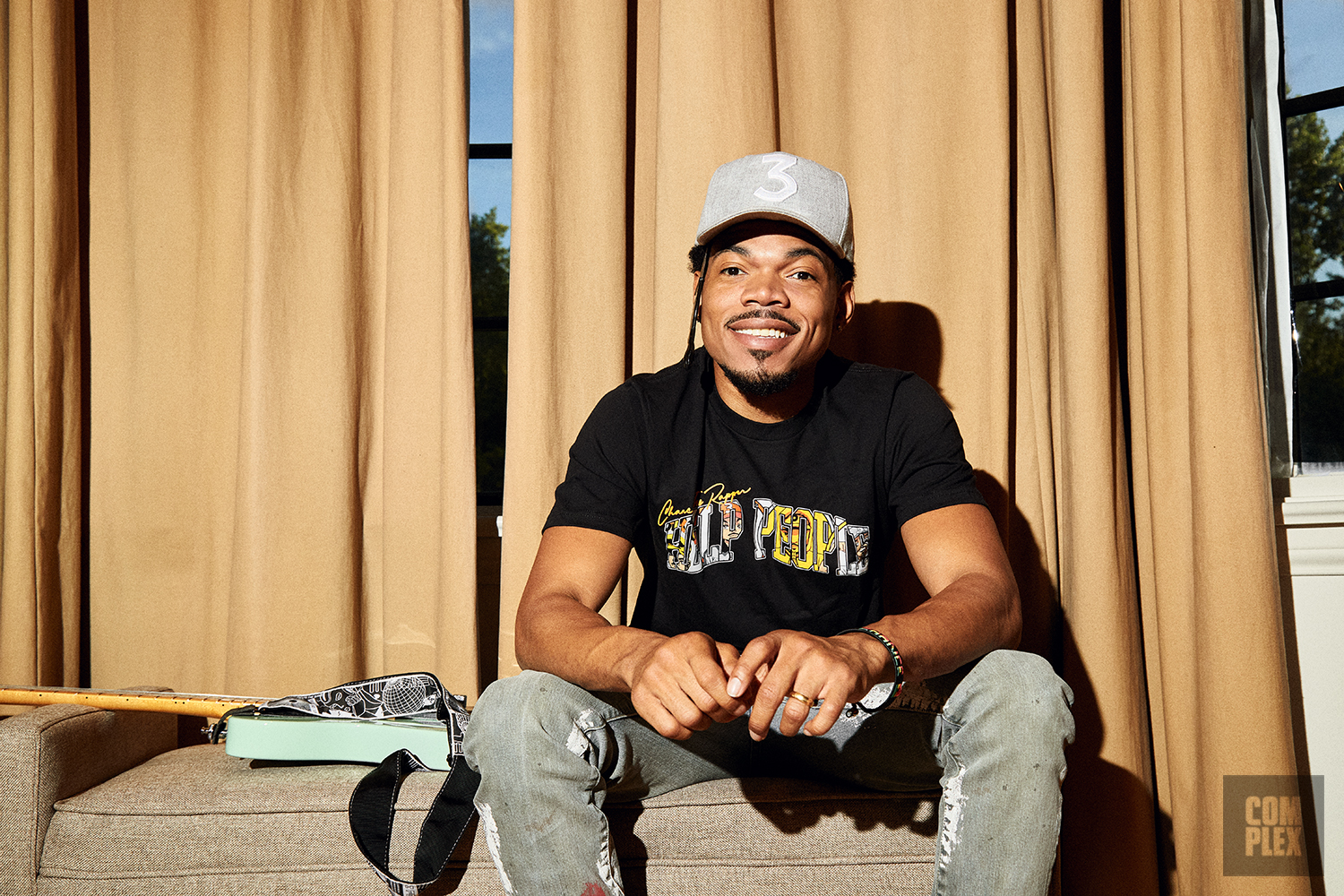
While Chance has been heavily immersed in the art world for Star Line Gallery, the bars remain at the crux of the project. Chance has talked a lot about himself in past records, but now he wants to give listeners more of “the Rapper.”
“Everything I do now, I have to treat it like I know who I am, regardless of if anybody else does,” he says. This realization occurred in September after he had a conversation with his close creative friends Vic Mensa and poet Aja Monet about how much they love writing and the technical aspects of it. Chance recognizes that he’s reached stardom because of his bars and the way he delivers them, so he wants to lean more into the technical side of rap and demonstrate how elite his pen is. And if people don’t like it? He doesn’t really care.
“I think it’s more important to be understood than liked,” Chance explains. “Somebody could like your shit but not understand. As long as I know somebody understands it, then I know I’m getting [the message] across.”
“Everything I do now, I have to treat it like I know who I am, regardless of if anybody else does.”
All of these creative missions meet at Chance’s ultimate objective to build upon the legacies that have been entrusted to him by Marcus Garvey, his family, and a vibrant community of Black creatives.
“This is the most purpose I’ve felt in a long time or maybe ever, in terms of creating,” he says with a sense of peace in his tone. “I think all art is a reflection of its author. I think that all of what we make cannot be separated from who the person is. I always try to tell my story and what I’m going through, and I think in these past few years, I’ve gotten great insight into my identity…and how it relates to this global network of people.”
As our conversation ends and I head upstairs, I could hear Chance goofing around with members of his team and running some quick rounds on the gaming system downstairs. He’s really at home…literally and figuratively.
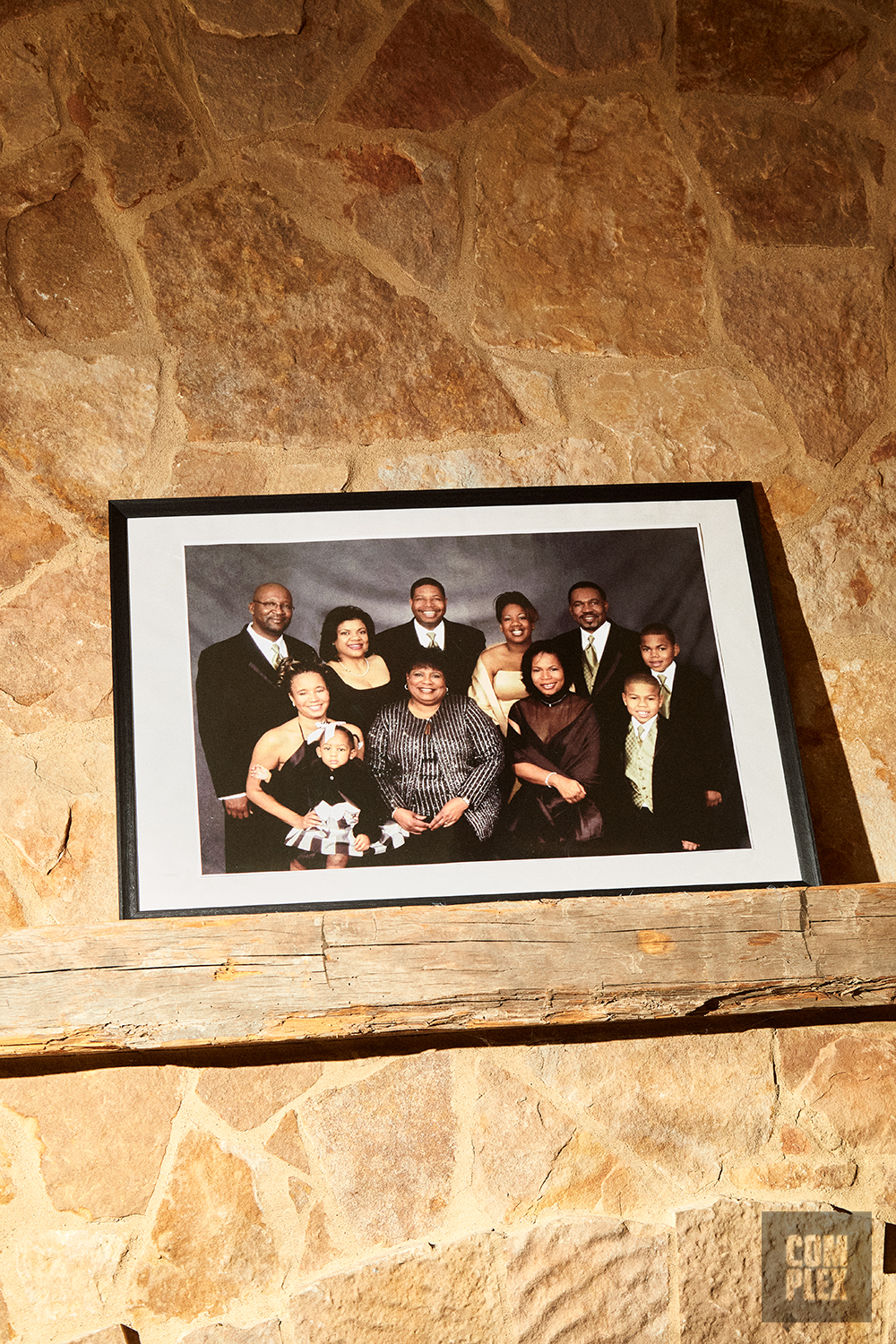
His childhood family portrait loomed over the fireplace behind him during the photo shoot, almost as if his lineage were watching over him every step of the way.
Chance the Rapper has accomplished a lot in his life before reaching 30, but he knows there’s still so much more to be done. For himself, his ancestors, and other Black artists who have become a witness to how far passion and conviction can take you.
When it’s all said and done, Chance the Rapper’s legacy will be defined by how many other artists’ legacies he was able to plant, nurture, and let soak in the sun in his lifetime.
“The groundwork has already been laid for us, not even for me,” he says as the buzz of the hair clippers ceases. “It’s not about me so much as it is that we just have to plug ourselves into something that is hundreds of years in the making.” Chance is just doing some of the extra legwork.
